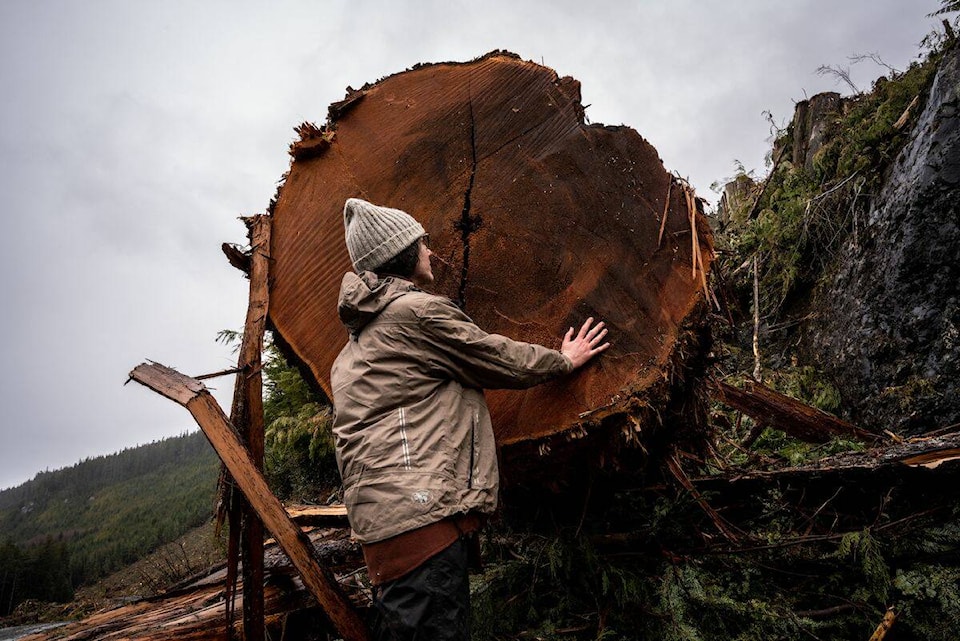Several B.C. based conservation groups are calling on the provincial government to issue immediate deferral orders for ongoing and planned logging in at-risk old growth forests, after new evidence obtained from satellite imaging shows ongoing logging and pending cut permits in proposed deferral areas across the province.
Eddie Petryshen, conservation specialist with Wildsight — one of the groups calling for these deferrals — said that the NDP’s Nov. 2 announcement that it would defer harvest of 2.6 million hectares of old growth forest hasn’t been “translated to on-the-ground action.”
READ MORE: Mixed reactions follow B.C. government’s old growth logging deferrals
“The big challenge is right now there’s no legal mechanisms to protect those deferrals because of the way [the NDP] went about this process,” Petryshen told the Bulletin.
“Companies can still apply for cutting permits within those deferral areas and that’s what we’re seeing and the process really really relies on not submitting those permits and so that cutting permit in the Wood River north of Golden is kind of the first test of the government and what they’re going to do because a company submitted permits in those deferral areas.”
Petryshen said he feels the government needs to work on rebuilding public trust, be more transparent and take action on the issue of of these deferrals.
The cutting permit for forest in the Wood River, about 150 kilometres north of Golden is a good opportunity to test the NDP’s credibility on this issue and set a precedent for old growth protection moving forward, Petryshen said.
This forest, is part of the inland temperate rainforest; an area of wet, massive old growth cedar and hemlock stands. It is also an important habitat for caribou. The North Columbia herd, consisting of about 184 animals, is one of the sole increasing or stable herds in B.C.
“Only 40 per cent of their habitat is protected,” Petryshen said. “This is just a really good example of what we continue to do in their habitat and even when you’ve got this herd that’s stable or increasing, we’re making it challenging for them to continue to persist on the landscape because we’re logging their habitat and only 40 per cent of their habitat is protected.”
Petryshen added that not only is the interplay of the old growth trees and caribou habitat important, the area is also historically significant. First Nations people of the area led explorer David Thompson through the Athabasca Pass and down the Wood River, and it was an important trading route for the Indigenous populations and later the Hudson Bay Company.
Following the Nov. 2 announcement, which Petryshen said mainly applied to BC Timber Sales (BCTS), while submission for new permits was stopped, older permits applied to prior to November 2 continued to move forward, so logging has continued in those deferral areas.
The Technical Advisory Panel, which came up with the criteria and did the mapping for the deferrals, found that there’s in excess of 50,000 hectares of proposed logging within these deferral areas; proposed, active or already taken place.
“We’re losing globally significant forests on a daily basis here in B.C. and they’re forests that will never come back because of both climate change and just how long they’ve taken to develop,” Petryshen said. “Some of these stands have been developing since the end of that last ice age and they’ve gone largely undisturbed since the ice age.
“So you’ve got these really irreplaceable forests that are being lost on a daily basis here in B.C. and oftentimes the only people that get to see these forests are the folks logging them because they’re quite remote.”
He added that scientists are still discovering new species in these inland temperate rainforests, but much of that research will be lost as the areas continue to be logged.
READ MORE: BC must defer more old growth logging in Inland Temperate Rainforest, Wildsight says
Petryshen cited a recent study from a group of scientists including Dominic Dellasalla, who warn that British Columbia’s inland temperate rainforest is one of the most imperiled rainforests in the world, and is at risk of total collapse within the next decade or two if more action isn’t taken.
“Old growth is one of the most popular issues in the province and polling’s been done and up to 80 per cent of British Columbians support the protection of old growth,” Petryshen said. “To get those sorts of numbers and those results is unbelievable and politically I think it’s a win for the politicians who are going to step up and do the work.”
He said Wildsight wants to see immediate deferrals of logging in all at-risk old-growth forest, more regular updates and transparency about deferrals from the NDP and an increase in funding to support deferrals that relate to lost revenues for First Nations, as well as funding that incentivizes conservation.
“Right now there aren’t those incentives in place and it’s a decision right now for a lot of nations between social wellbeing of their communities and the environment and that’s not a fair decision,” he said. “We need to incentivize other means and the big overarching ask is legislation to protect biodiversity across British Columbia.”
